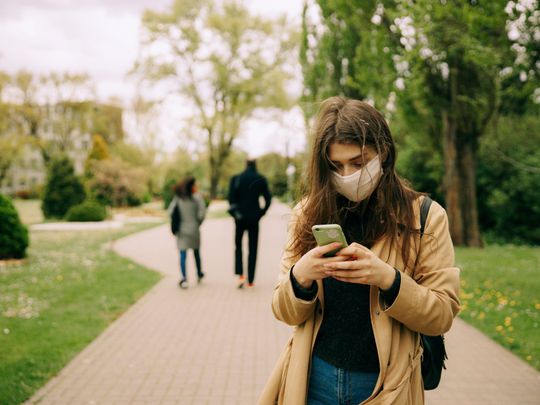
Have you received a broadcast message on social media warning you about a coronavirus tracker that has been “inserted” into your phone over the last few days? Well, that’s not exactly what has happened and here is what you need to know.
Called the ‘COVID-19 exposure notifications’, Google has introduced coronavirus contact tracing technology to help identify whether a user has been exposed to someone with the disease.
For those who are worried about their privacy, Google and Apple have stated that the feature is only turned on when a user chooses to. The technology works in conjunction with participating apps health authorities of a particular country.
However, you can already find it on your Android or Apple phone, turned off by default.
For Apple users, it can be found under ‘settings’, ‘privacy’, then ‘health’. Whereas in Android devices, it can be found under ‘settings’ then ‘Google’.
Works in collaboration with health authorities
To use the system, the user needs to download the public health authority's app, in countries they are available in.
Then it will allow you to share with the app that you have COVID-19 to help alert people that you have been in contact with.
If you've been exposed to someone who has shared that they have COVID-19, the app will notify you and give you further instructions.
How does it work?
Once the feature is accessed, Android phones state: “When you turn on exposure notifications within an app from your region's government public health authority, your phone shares ‘random IDs’ with other nearby phones that also have turned on the exposure notifications system.”
As you go about your day, your phone and the devices around you exchange random IDs. When your phone detects a random ID from another device, it records and stores the ID.
If someone reports having COVID-19 and their ID is stored on your phone, the app will notify you of the next steps to take.
If the app learns that you have come into contact with someone who reports himself or herself as having the illness, the system shares specific information with the app.
For example, the day that the contact happened, how long the contact lasted for and the Bluetooth signal strength of that contact.
However, the public health authority app is not allowed to use your phone's location.
The exposure notifications system itself does not use your location or share other users’ identities with the app, Google or Apple.
However, in order to use the feature, the app asks the user to turn on the phone's Bluetooth as well as the phone's location setting, stating that the system uses this to scan for Bluetooth signals.
Privacy concerns
According to the Apple website, the technology is “designed to protect your privacy”.
“We understand that the success of this approach depends on people feeling confident that their private information is protected. The Exposure Notifications System was built with your privacy and security central to the design. Your identity is not shared with other users, Google, or Apple,” the statement reads.
Currently, in the UAE, the Ministry of Health and Prevention, Abu Dhabi Health Authority, and Dubai Health Authority have provided an app named ALHOSN UAE for smart phones and devices, however it does not work with this Google feature. The UAE’s free-of-cost app alerts users if they have been in contact with a confirmed COVID-19 patient.






